Two forces—author Sohail Rekhy and historian Raghujiraje Angre—come together to remind us that there is much history to Mumbai’s Hamptons than being a playground of the rich
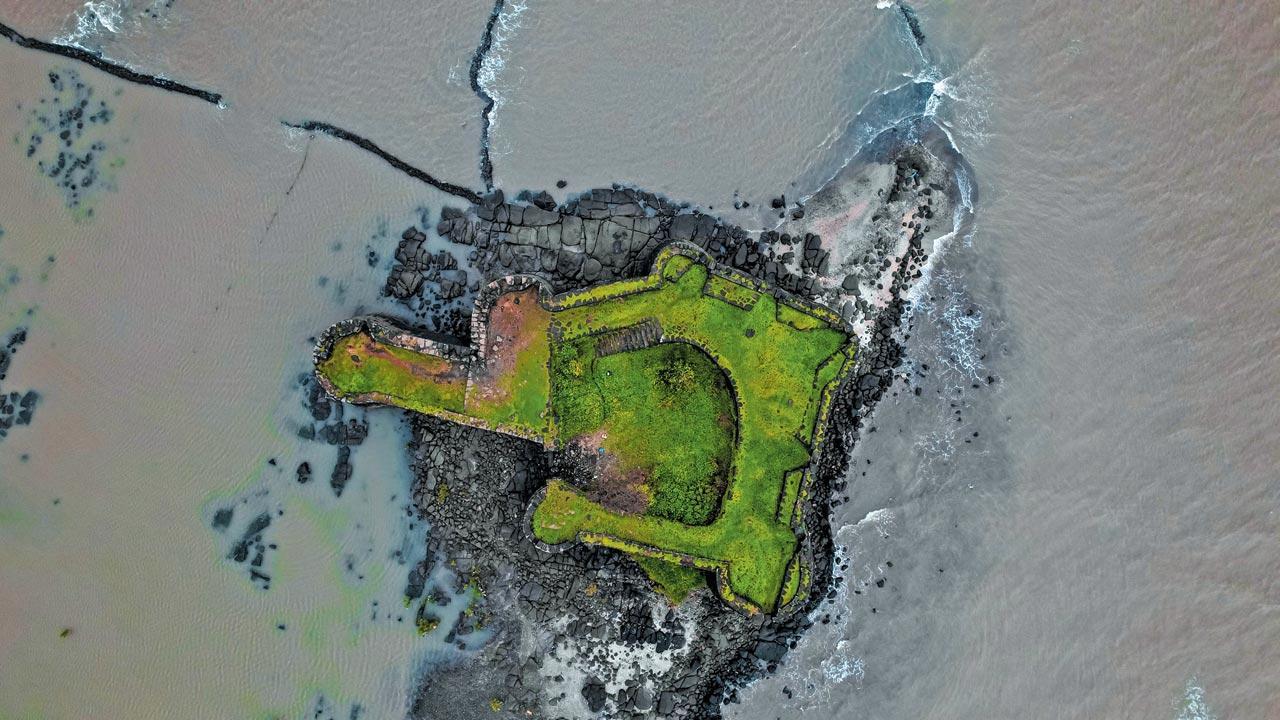
The amphibious Kolaba or Alibaug Fort that’s in water during high tide
We know of him fleetingly in naval circles, through INS Angre, the port that provides logistics and administrative support to the Western Naval Command. Then his son, Sumbhajee Angria, popped up in the Pirates of the Caribbean franchise when Jack Sparrow stole his precious ruby. Maybe he’s a little bit more well-known to students and enthusiasts of Maratha history.
ADVERTISEMENT
But along the Konkan coast, and most dominantly in Alibaug (though not as much as he should be, we argue), Sarkhel Kanhoji Angre is “Raze”—naval commander of the Maratha army—who fought off the East India Company coming in from Korvai, the Siddhis from Murud Janjira, the Dutch at Vengurle and the Portuguese all around the coast. He was the only adversary against whom the British and Portuguese, joined forces. Such was Kanhoji’s prowess that the GDP of Alibaug state in the years 1680 to 1729 was approximately Rs 36 lakh a year; this at a time when India, China and Iran—all kingdoms with great sea trade—made up 80 per cent of the world’s GDP. To establish sovereignty, he minted the silver Alibaugi rupaiiya, one of which was worth 1.20 British pounds. And yet, until recently corrected, Kanhoji Angre—the first of the House of Angres—was referred to as a maurading pirate in Western literature. A reputation traced to Robert Clive of the East India Company.
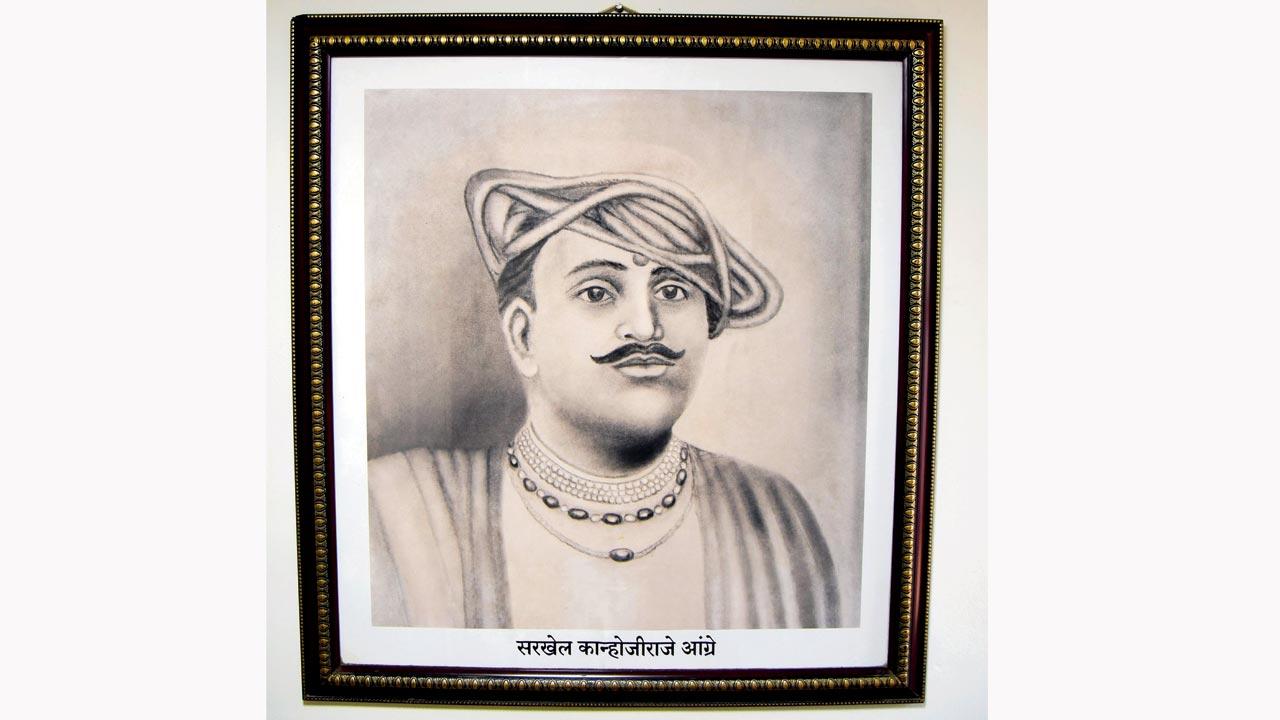 A reproduction of a charcoal portrait of Kanhoji Angre made by a British soldier of fortune. The fragile original is preserved by the family and hopes to find home in a museum. Pic/Shahdab Khan
A reproduction of a charcoal portrait of Kanhoji Angre made by a British soldier of fortune. The fragile original is preserved by the family and hopes to find home in a museum. Pic/Shahdab Khan
So, thanks is due to author Sohail Rekhy who’s upcoming book, Angrias, A Historical Odyssey (Penguin Random House India), paints Angre in detail as the national nautical hero he was.
It all started as a The Famous Five or The Secret Seven book that Rekhy would write for his daughter, Ahuratara, but with an Indian context. “I wanted her to read books with an Indian context—people with names like hers, set in familiar places,” says the man who also makes furniture out of reclaimed wood, “and not arrive at our history or stories through another lens that makes you feel like the ‘other’. That’s what I love about authors such as Amitav Ghosh, who after reading all the western classics and spending time in the West, write in a language and ecosystem that is Indian.” And of course, the absolute thrill of adventure at so familiar a coast.
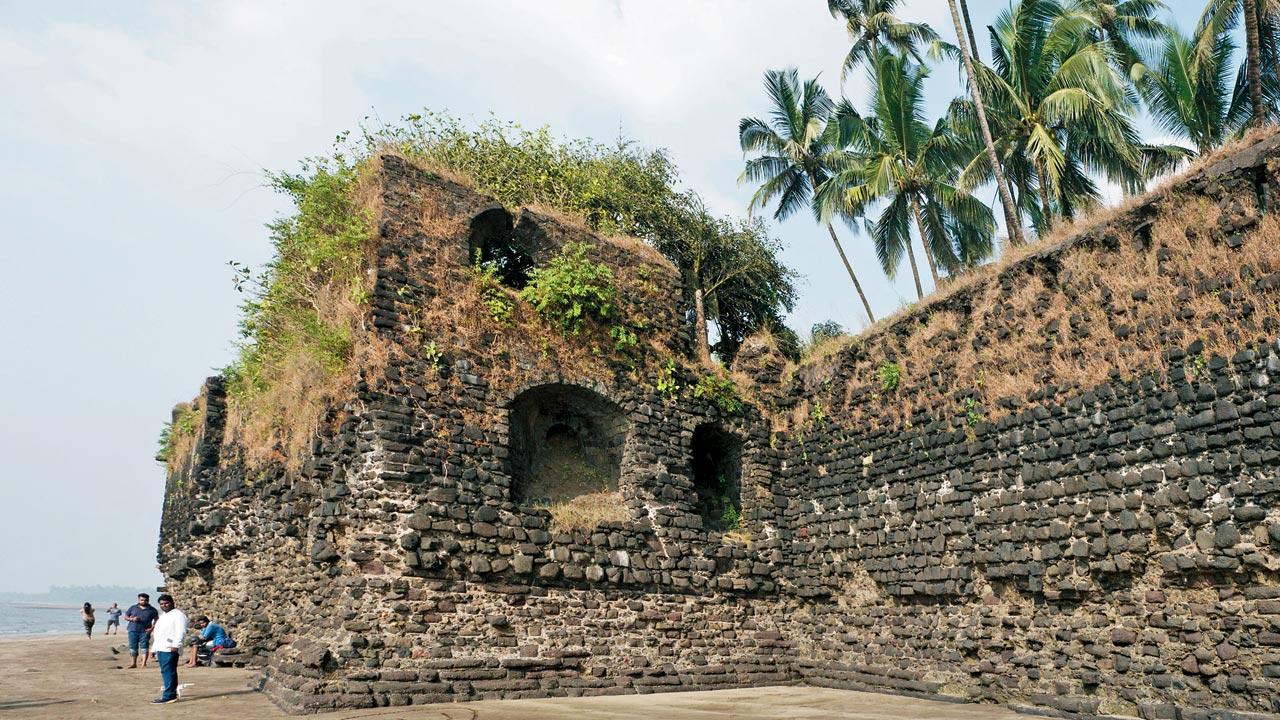 Kanhoji Angre commanded 16 forts on the Kokan coast, including Revdanda Fort, and the surrounding sea
Kanhoji Angre commanded 16 forts on the Kokan coast, including Revdanda Fort, and the surrounding sea
The Arabian Sea crashes right outside the boundary wall to Rekhy’s Bandra home; “I eat the harvest of the sea: fish, crabs, teesrya, shrimp,” he says. It’s a bungalow located within the confines of Galaxy Apartments at Bandstand, divided into three to house factions of the family: His parents, actor Waheeda Rehman and her late husband Kamaljeet Rekhy; his sister, and him. While the current resident celebrity warrants police posted at the gate, Rekhy accompanies us all the way to the gate when we depart, and offers to have his driver and car drop us to work.
“My parents wanted a more rural upbringing for us,” he says, “So we moved to Bangalore when I was in second standard at Bombay Scottish. My father started a dairy business. They wanted us to have more exposure to life than just one profession. So we’d go to the interiors of the country and stay in daak ghars and guest houses. My mother would be recognised sometimes, but these were such small places that they’d leave her alone. In summers, we rented a block at Corbett [national park], and my father subscribed to the National Geographic magazines. I thought I would grow up to become a journalist, camera in hand roaming the jungles of India.” He did a stint in Times of India in the early 2000s, covering the happenings of Bandra as his beat, before he realised he was cut out for fiction. His books are available on Amazon, with his publishers haranguing him to make them available as hard copies in stores.
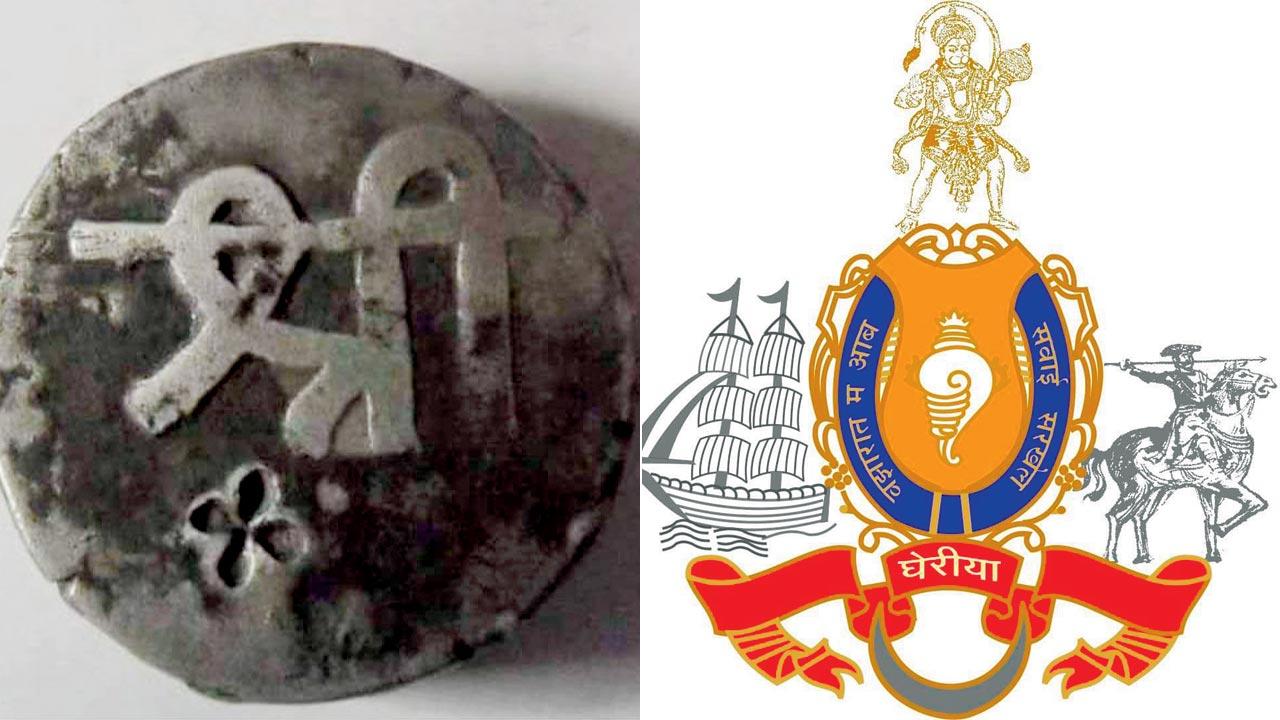 One silver Alibaugi ruppaiya, minted by Kanhoji Angre, was equal to one pound, 20 pence of British currency. (right) The Angre coat of arms from Raghujiraje Angre’s private collection
One silver Alibaugi ruppaiya, minted by Kanhoji Angre, was equal to one pound, 20 pence of British currency. (right) The Angre coat of arms from Raghujiraje Angre’s private collection
Since the pandemic, Rekhy has been spending much of his time at his wife’s native Bhutan where friends are within reach, his daughter gets to school in 10 minutes, and there is lesser competition among school-going children about which model of car drops them to school. Courteous, soft-spoken and extremely gallant, he wears his moustache upturned like his current hero. “I started researching the book when my daughter was one,” he says, “but got so taken in by Kanhoji’s character that that project got sidelined for this one.” Ahuratara, meaning ‘god’s star’ in Persian, is seven now and we glimpse her shy feet as she flits from room to room as we speak in a houseplant filled vestibule between his lush garden outside and the spacious, but homely living room with green mosaic floor over which a large, laden Christmas tree presides. Interestingly, Sohail is Persian for Canopus, the second-brightest star in the night sky used for land, sea, and space navigation.
Rekhy’s thirst for all and any information for the illustrious naval commander lead him to books that mentioned him housed in the Asiatic Library, and drawings and models of his gurabs (wind-powered galleys), galvats, and pals that took on the mighty galleys and Man’O’Wars of the Portuguese, British and the dhows of the Siddhis.
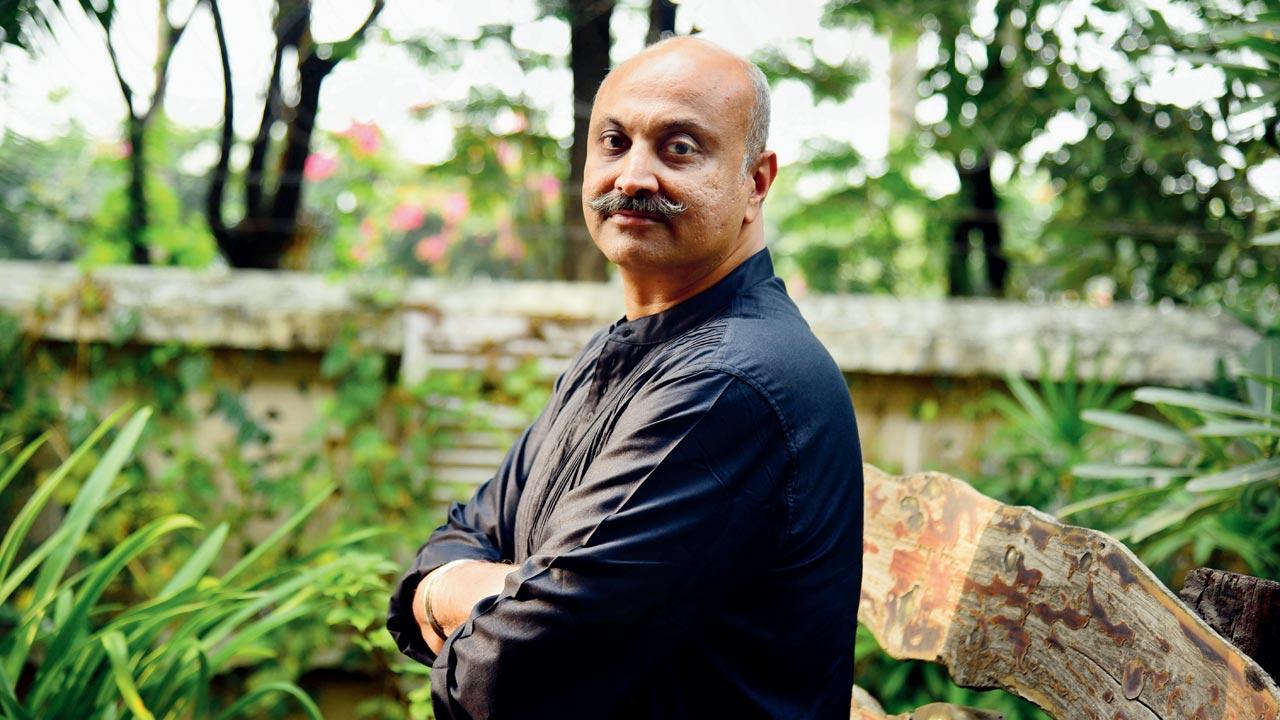 Author Sohail Rekhy started researching Maratha Naval Commander Kanhoji Angre to write a storybook for his daughter, Ahuratara. Pic/Nimesh Dave
Author Sohail Rekhy started researching Maratha Naval Commander Kanhoji Angre to write a storybook for his daughter, Ahuratara. Pic/Nimesh Dave
“He game from a Sankhpal family of horse traders who also served as royal convoys,” says Rekhy, “We know him to be an erudite man who could quote the shashtras, having gone to the same gurukul as Balaji [Vishwanath] Bhat, the first of the Peshwas, who was a few years ahead of him. And he was a man of great confidence, strategy and knowledge of modern shipbuilding, devising tactics to beat what were the biggest seafaring powers of the day, with relatively less complex human and wind-powered boats.”
He implemented Shivaji’s famous guerrilla tactics at sea,” Raghujiraje Angre, the ninth generation descendent of Kanhoji, tells us. We are at his Gheriya bungalow in Alibaug city, in the anterooms of which, we imagine, are the fragile original charcoal of Kanhoji by a British soldier of fortune, the Commander of Staff’s sword, the silver Alibaug ruppaiya and official letters by the ladies of the Angre household—Kanhoji’s four wives and daughters—to the leadership of various kingdoms. “They held position equal to advisors,” he says of his foremothers, “They had authority of the power of attorney and their letters to the Portuguese, Marathas and the East India Company are lessons in statewomanship, diplomacy and valour. Long before women empowerment and equal rights became buzzwords or before [educationist] Savitribai Phule, Marathi women such as Rani Ahilyabai, Rani Lakshmibai were equal to men in the battlefield and in court. It wasn’t empowerment by a man in power, but by a system and society. Kanhoji’s daughter took captive the British ship that stopped at Alibaug’s coast to fill up on fresh water, even as her father was dead and her brothers held captive by them. And to stop any chance of negotiations or leverage, she had everybody on board killed.” Fitting, since much of the Konkan’s societies, such as the Kolis, were matriarchal with equal rights for women who handled business, property, and economy on shore while the men were at sea.
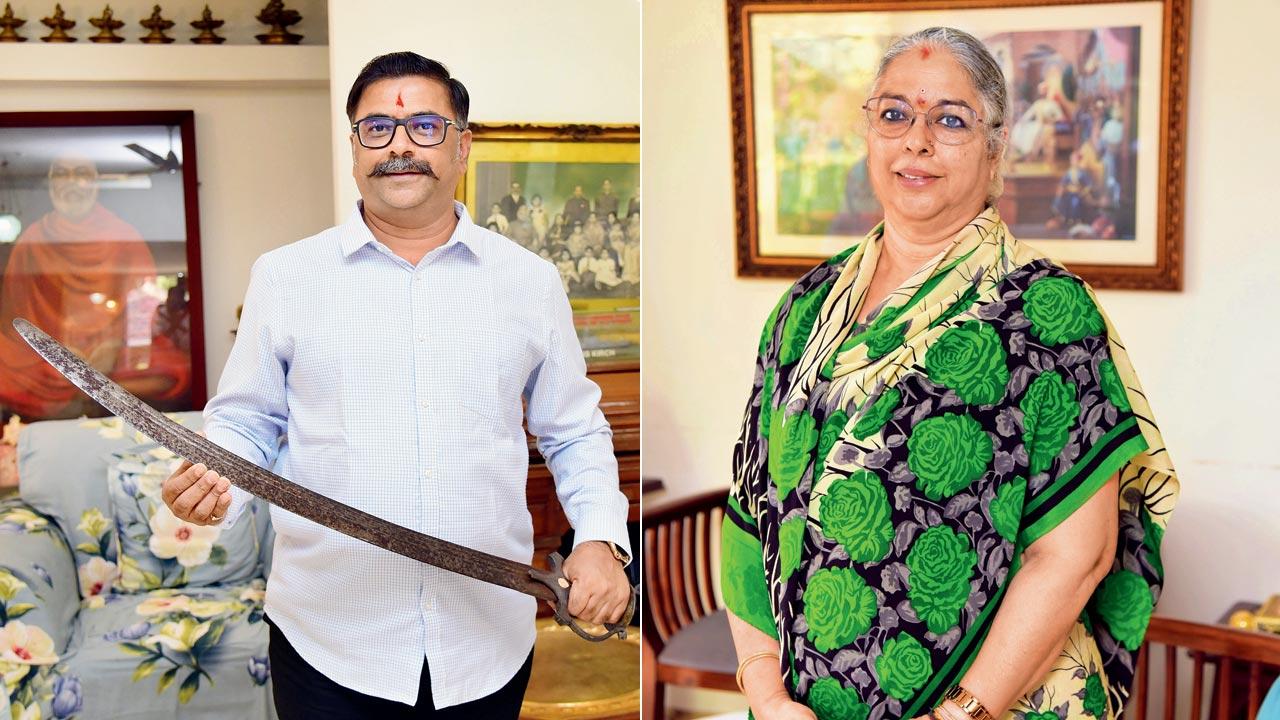 Kanhoji Angre’s ninth descendants, Raghujiraje with Kanhoji’s sword and his sister Chandraharsha Angre at their home, Gheriya, in Alibaug. Pic/Shahdab Khan
Kanhoji Angre’s ninth descendants, Raghujiraje with Kanhoji’s sword and his sister Chandraharsha Angre at their home, Gheriya, in Alibaug. Pic/Shahdab Khan
Chandraharsha Angre, Raghuji’s elder sister, who divides her time between Cuffe Parade and Alibaug, laughs when she tells us: But I can’t bear any kind of violence. We had gone to watch [the movie] Kesari and I walked out of the theatre.
Angre got his name from the holy ash that helped his parents—Tukoji and Ambabai Sankhpal—conceive. The House of Angres now exists in two factions: The ones that went to the third Battle of Panipat with the Marathas served as ministers and prime ministers in the princely state of Gwalior and are known as the Sardar Angres of Madhya Pradesh. Raghujiraje’s grandfather, Sardar Sambhaji Chandroji Rao Angre was Member of Parliament. The Alibaug branch, represented by Raghuji and Chandraharsha, are the Sarkhel Angres, loosely translating to Commander of Naval Staff. By profession Raghuji is a businessman, but his moral duty is towards the House of Angre. “There is more to Alibaug than beer and a fish thaali,” says the historian and biker. “Look at it this way: The Gateway of India is also a border of the country—just like the land borders. Alibaug, Murud Janjira are all sea borders and the Angres protected these from multiple invaders, attacking together.”
Rekhy’s book reminds us that then, as is now, the Konkan coast was a gateway to India’s prosperity. “We were already trading cotton, spices, salt and salt-petre with Aden in Iran, Arabia, the Romans, Java and further into Europe. “They found Harrapan pottery in Oman recently,” Rekhy tells us excitedly, his interest in the world beyond the studios of Andheri evident, “We were the largest producers of salt petre in the world. Ships coming into Europe had to pay a tax in silver if they didn’t carry salt petre, which was used to make gunpowder, as ballast.” Salt was made in the pans lining the Gujarat coast, down the Konkan, and salt-petre is made from the guano of birds abundant in its rich foliage. “At a time when the Peshwas were looking towards Delhi and the Desh [Deccan Plateau], he continues, “Angre was guarding the coast to assure the Maratha Kingdom’s prosperity, forming alliances with the local Koli kings and cheftains. The Europeans would bomb out Koli settlements at the slightest dissension, and Angre had such charisma as a leader that he could commandeer people of the coast across caste and creed—Agris who worked in the salt-pans, Bhandaris, Siddhis, Kokani Muslims, the shipwrecked Teli Jews of Navgaon, Kolis and Marathas to unite and fight against the invaders.” This echoes in the geo-politics of today, when the financial capital is the largest taxpayer in the country, but receives a disproportionate slice of the budget; and to the overculture of the Maratha empire which centred culture and ethnical importance on the Deccan plateau through Pune and Kolhapur, while the Kokanis were relegated to peasant-trader status.
“Kanhoji knew how to use manpower and the land to its best advantage,” says Raghuji, “He deputed the Agris, who worked on salt-pans from Gujarat onwards, to the frontline. The community is used to the glare of the sun and ferocious in hand-to-hand battle—they would meet their mark even before the enemy had reloaded their guns. The Marathas were a brown water navy with 13 kinds of indigenous boats. In battle, they would pretend to flee the European ships who would follow them into narrow creeks where the Maratha infantry would be waiting to attack.”
The Chattrapati’s allotment letter to him was simple: Whatever you take south of Vasai and north of Vengurle, is yours. Eventually, Kanhoji chased the Siddhis out of the area to take 50 km of the Konkan coast, leaving them with a mere 7.5 km.
Angre children are raised on these stories, with visits to Vijaydurg on Navy day and teaching moments of the family’s legacy as they hike to forts on vacation. “To me, the responsibility is more towards living as per people’s expectations of the family Angre. For example, I had ridden to Khardung La a few years ago and took off my balaclava and helmet to take a picture with the Tricolour. ‘Arre raze, tumhi!” said a man and bent to touch my feet. He was someone I had met at a function in Thane, and immediately, I had to act with dignity. My twins [his daughter Gayatri aka Divyambika also wants to join the Navy] say that I carry myself with a different gravitas when we are in Alibaug. I have to.”
His sorrow is the party and holiday destination for the rich that Alibaug is becoming that buries its rich and important history: “Mumbai jhala nahin, Alibaug rahila nahin [It hasn’t become Mumbai; it hasn’t remained Alibaug].”
Kanhoji’s sthaan is here, as well as the remembrance stones for many soldiers lost at sea over the centuries. A moustachioed Rudra Maruti, traditionally found to crematoriums, stands guard over them near Mandwa, just as he does over the Angre family crest. Raghuji also wears his moustache upturned like the guardian god.
He hopes to house a museum in Alibaug or Vijaydurg to which he can entrust the family’s precious items of heritage as well as that of the Maratha navy. Raghuji’s foundation, Gaj (pronounced Gaaz as in the sound of crashing waves in Konkani), is hoping to restore the importance of Maratha forts such as Kulaba or Kolaba (Kul being land and aap being water in Konkani) Fort, Rev Danda, Hirakot and Sasargad, Vijaydurg, Suvarnadurg and Raigad fort, which earned the reputation as Gibraltor of the East for being impregnable. He studies the architecture, nature of fresh water reservoirs and the tactical importance of each of these, can dive into detail about how the amphibious nature of Kulaba Fort made it accessible by sea only for two hours, too short to launch a definitive attack. “We also want to educate the children of Alibaug and the coast on the various jobs they can get in the Navy or the Coastguard. It’s not just being a soldier: You can be a radio operator, engineer, logistics person. Currently, only three per cent of the Navy jobs are held by people from the Konkan coast—most of them come from Uttarakhand, a land-locked state. We want to help the children of Alibaug prepare for the NDA and related Navy exams.” His own son, Jayarjun is studying in the 11th grade at Bhonsala Military School in Nashik, determined to join the Navy. If he succeeds, he will be the first Angre in a long time in the profession.
Forces are gathering to make Alibaug’s heritage more visible. The Maritime Mumbai Museum Society is starting boat tours from Thaal to Khandheri Fort in January. Local history buff Yogiraj Sapre will tell them about the cave, take them to the lighthouse, Kalimbi devi mandir who protects the island, Hazrat Alishah Baba’s dargah as well as the Kanhoji’s commemorative chhattri or sthaan. We hope the tour includes details such as how the sport of malkhamb on the island is modelled on a ship’s mast: It stands 12 to 14 feet instead of the standard seven to eight feet. “This was to mimic the sailors who would climb up the mast to cut off the sails as toddy tappers do, and then grease the mast on their way down with a mixture of white-butter and potato mash so that no one could climb up again,” says Raghuji.
Rekhy’s book for children is still on page: Set in the 1990s, with fewer means of amusement, four 10 to 11-year-old girls from different communities of Alibaug set off on a series of adventures.
And given his connection, wouldn’t the story lend itself beautifully to cinema, with a gloriously turbaned and moustachioed Ranveer Singh as Kanhoji. “Screenplay is a different medium,” says Rekhy humbly, “but I would be happy to collaborate.”
 Subscribe today by clicking the link and stay updated with the latest news!" Click here!
Subscribe today by clicking the link and stay updated with the latest news!" Click here!







